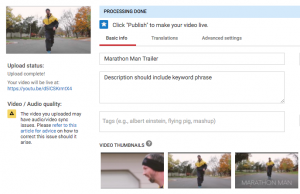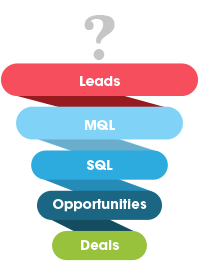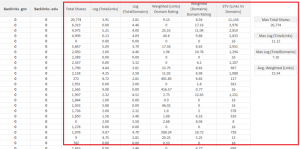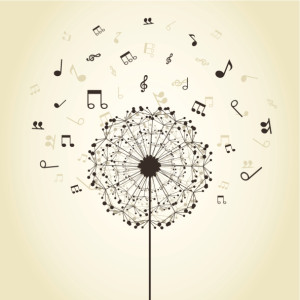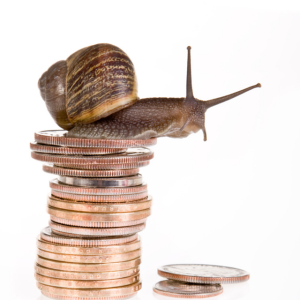— March 19, 2019
A couple of weeks ago, a friend invited me to his birthday party hosted at a family friend’s house. The menu was planned, the bar was stocked, and the present was wrapped. And theoretically, it was going to be a blast. But as the party approached, my desire to be antisocial reared its head.
Foolishly, I allowed my mind to wander. What if …
What if I ran in, dropped his present, grabbed a cupcake, and escaped?
What if I walked in, realized that I’d forgotten his present, and had to “be right back”?
What if I got to the door and then felt “ill” and had to leave?
Just because I conveniently found myself leaving the party in all three scenarios wouldn’t mean that the party wasn’t fun, that the house wasn’t done up beautifully, or that the food wasn’t worthy of Julia Child’s attendance. It just meant that, for whatever reason, I didn’t belong and I bounced.
The same can be true of your website visitors and your website.
What Is a Bounce?
According to Google, a website bounce is a session that triggers only a single request to the Analytics server. If you’re not fluent in “Google-speak”, here are some examples of a bounce:
- A visitor opens a single page and immediately exits.
- A visitor opens a single page, stays on the page for a minute, and then exits.
- A visitor opens a page and clicks on a link that takes them to different website.
- A visitor opens a page, clicks the back button, and returns to the previous page.
- A visitor opens a page, stays on the page for half an hour without interacting, and the page times out.
How Is Bounce Rate Calculated?
A website bounce rate is determined by the number of visitors who leave a website after visiting only one page, or not engaging with that page, divided by the total number of website visitors.
Say a website generated 100 visitors total, and 70 of them landed on a page within that website but left immediately after landing. No engagement, no interactions, nada. That website would have a 70 percent bounce rate.
A website page bounce rate is determined by the number of visitors who enter on that page but do not engage with that page or visit any other pages after that one.
Some pages could have very low bounce rates—generally indicative of stellar website performance—and others could have bounce rates closer to 100 percent. And even so, that doesn’t mean that the website pages are terrible.
After all, not all website pages are created equal, neither are their visitors, and neither still are their visitors’ intentions. Like I showed with my extreme antisocial tendencies above, the party could have been amazing, but if all visitors were as antisocial as I was, there would have been a 100 percent bounce rate.
It’s Okay if Bounce Rates Are High
Say it with me now: It’s okay if bounce rates are high. Depending on the page type or what you expect visitors to be doing when they get to the page, you might even expect the majority of your visitors to bounce (for example, landing pages and blog posts tend to have bounce rates upwards of 70 percent!) However, that doesn’t mean you shouldn’t try for on-page engagement (you should); it just means you may have to strive for engagement in a different way.
Let’s talk about these instances:
Misaligned Expectations
The other day, in my pre-party attendee mania, I decided that I wouldn’t be able to attend the party until I’d made the perfect dish to bring. I’m talking a-loved-by-all, sweet, savory, packed delight. I didn’t think this would be difficult, so like 59 percent of cooks around my age, I planned to bring my tablet into the kitchen, metaphorically speaking (in reality, I was curled up in bed).
The first result brought up a Taste of Home article: 50 Party Recipes So Good You Won’t Have Leftovers. I took the bait and I clicked. I scrolled down the page, past weird vegan buffalo dips, past mayo-laden pasta salads, and even past a variety of cheeseballs. Man, was I disappointed by the results! Not a single one screamed, “Make me! Bring me!” So, I did what about 70 to 90 percent of visitors do on a blog post: I bounced.
Visitors Aren’t Ready
There I was, rapidly running out of both brainpower and daylight, and back on the top of Google’s results page when I saw it:
Baked Garlic Parmesan Puffs.
Yes, please.
I clicked. I scrolled. I read the description that promised me that these beautiful, flaky puffs could be on the table in 20 minutes.
Satisfied that I had found my perfect recipe, and that I’d be able to make the puffs the next day, I put my tablet to the side and went to sleep. Or, from the perspective of a digital marketer, I let myself fall idle on the Eatwell101 website, and I bounced. Not because I wasn’t happy—I was, and drooling—but because in that moment, I wasn’t ready to take the next, logical step and literally step into the kitchen.
Answers Are Provided
As you might expect, the next day did not unfold as I’d planned. Long story short, no puffs were made and I was SOL—and time. By some stroke of genius, I remembered that there was a specialty grocer near the house, a specialty grocer known for its crab dip pretzel. But what time did it close?
One quick Google search led me straight to their Contact page: “Open now through 10 p.m.” Perfect.
The page answered my question, and once again, I did what I do best: I bounced.
What a High Bounce Rate Means
High bounce rates don’t mean your website pages are performing poorly, but rather that there are opportunities to engage with your personas and facilitate more on-site interactions:
- To reduce misaligned expectations, you may wish to ensure that your page title, URL, and meta description are as aligned with your on-page copy as possible.
- If visitors aren’t ready to take the next step, try to engage with them higher in the funnel. Present them with relevant top-of-the-funnel content, so that you’ll be top of mind when they are ready for that final step.
- If visitors go idle, retarget them later on. Yes, they will still bounce, but you may be able to bring them back when they are more engaged and interested in perusing your content.
- If visitors disappear because you answered their question, well, first of all, good work. Visitors will remember that you provided answers, and may return later on, assuming there is longer term potential. Second, you have an opportunity to present the visitor with a similar or follow-up topic/offer/blog/Q&A to try and keep them from bouncing.
Next time you’re reviewing your website’s KPIs and you notice that your overall website bounce rate is higher than you’d like, dig deeper. Look at the type of pages that are inflating the bounce rate, consider the goals of your personas, and how you can better engage with them. Chances are, better engagement is possible.
And one last word to the wise: If you happen to be throwing a party in your near future and you’re worried about the bounce rate of antisocial weirdos like myself, I recommend you place baked brie strategically around the house. That will force even the most antisocial humans to engage. Trust me—I stayed ‘til the end of the night.
Digital & Social Articles on Business 2 Community
(21)
